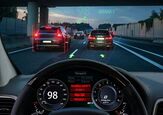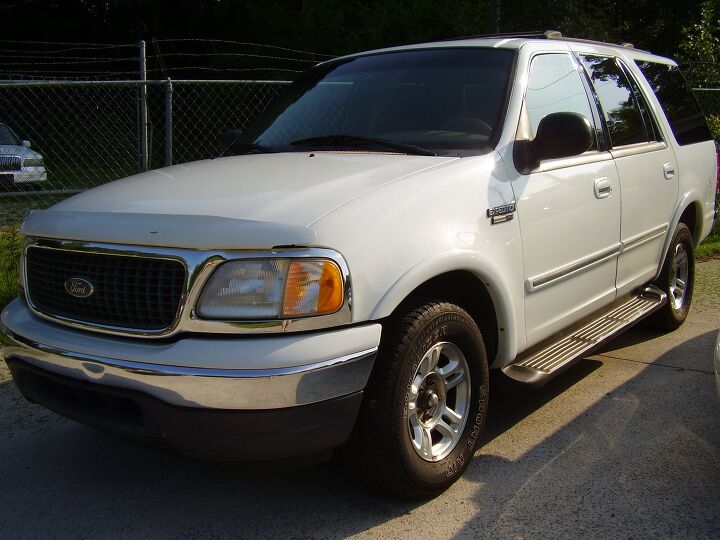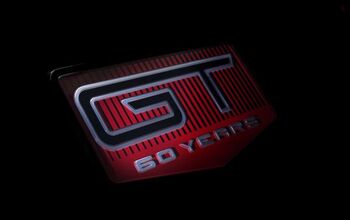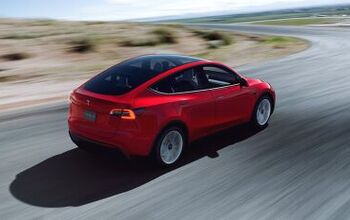Hammer Time: German Fury, Easy Credit & The 1967 Arabs
I woke up bright and early on Monday morning, 7:00 AM. A wake-up time reserved for maniacs and those who have circadian rhythms that are the exact opposite of yours truly.
Just a 10 mile drive to a neighboring auto auction. A nice stroll to a back lot loaded with 91 cars for the 9:30 AM sale. The beauty of the day seemed to shine before me as I looked at what was supposed to be an immaculate 1987 BMW 524td that had all of 69,000 miles.
It turned out to be a BMW 518i with a broken odometer. Two disappointments in only one car.
To put this in reference, imagine a conventional gas engine that can outdiesel a diesel when it comes to disadvantages. The 518i was quite possibly the slowest BMW sold in Europe during the 1980’s. Nobody wanted an arthritic 1.8 Liter engine that had less forward momentum than the 1976 Buccaneers or the 1967 Arabs . Even ten years ago, you could buy one of these light on the throttle BMW’s for dirt cheap.
It’s also tough to find any good mechanic who can work on a grey market vehicle. A European engine that was never sold in the United States is even more of a deterrent. Unless you do your own wrenching, in which case, the 528i is an infinitely better vehicle.
So how much did this unter-achiever sell for this morning? Try $2425.
There is still plenty of crazy in todays market. Observe the following prices…
2004 Toyota Sienna: LE, Cloth, 153k, Big Crack On The Dash: $8600
2006 Chevy Impala: LS, Leather, 98k, Prior Rental: $7600
2005 Toyota RAV4: 4wd, Cloth, 160k, Interior Issues: $7100
2000 Toyota Camry: Leather, 39k, Automatic, Black: $6800
2007 Honda Fit: Sport, 199k, Auto, White: $5550
2007 Toyota Camry: LE, Cloth, 197k, Interior Issues: $7900
It’s virtually impossible for me to buy late model Toyotas, Hondas, and anything that may be on the short list of a large buy-here pay-here outfit. A lot of the notes on these cars will be sold to finance companies who will then in turn package these beautiful deals into asset backed securities that can be sold in the greater financial markets.
The market for these assets has nearly doubled in only a year. Like all other bubbles, there will be some popping at some point. But for now it means that I just can’t buy in certain markets.
I did buy two vehicles.
A 1996 Nissan Maxima SE with high miles (206k) but a solid powertrain. It was rarely on the road for the last two years due to it being an Atlanta car with emission issues. A lot of shops will quote $300+ for a knock sensor on these things and $700 for the cat without telling the buyer that both parts together can be had for about 15% of that price. That’s what happened here.
Maximas can make superb finance vehicles. But you have to bring the vehicles back to a state of condition that I call ‘Day One’. Replace the power steering and brake fluids along with any hoses under the hood that show signs of cracking. Get all the interior components working including the windows, radio and all dashboard buttons.
In essence, you want the new owner to get in a vehicle where everything works with ease so that they, in turn, will take care of any little problems before they become big.
If the car runs well, I got paid. If it winds up in the shop, I get nothing but grief. When you use the ‘me’ criteria of, “I would buy this vehicle if I were in the market for one.”, you end up with several hundred more in the cars. But you earn thousands and often times get referrals.
The 2000 Ford Expedition XLT also had over 200k. However it was immaculate. No stains on the interior. Garage kept. Everything, save for the driver’s side window, was in good working order. That I bought for about $300 more than a run of the mill version, but it will wind up on the road a lot quicker than the common ones in average condition.
Turnover is a big deal in the car business. Hopefully these two vehicles will flip quicker than than my local commissioner who recently got caught trying to railroad a local fruit stand out of all things.
More by Steven Lang
Latest Car Reviews
Read moreLatest Product Reviews
Read moreRecent Comments
- MaintenanceCosts Most of the article after the blockquote is Posky laboring mightily to somehow blame this clearly anticompetitive and oligopolistic conduct on the big bad government.I look forward to some of the usual commenters explaining to us that, actually, the oil industry is a cuddly teddy bear and the real villain is people trying to sell us cars that don't use oil.
- Bd2 A modest price bump for one of the better if not the best vehicle in it's class. And it's a very good deal still considering the Front wheel drive competition over at Lexus to name one. These Genesis vehicles are more like BMWs of the 90s but with better styling.
- Dave M. What???? Big business taking advantage of us? I thought it was all Biden's fault!?!
- OA5599 Now if we could only get Toyota to change BZ4X...
- FreedMike You mean the petroleum market is manipulated and doesn't respond to normal supply/demand? No way. Can't be. This, folks, is why electrification is important - the only reason why the petroleum industry gets away with this is because they were the only game in town for over a century. That has GOT to change or we'll keep getting ripped off.



































Comments
Join the conversation
Would that BMW's engines the same one as the engine in 318i? Which were sold in the US. So just treat it as a 5-series with a 3-series engine. BTW congrats on that Maxima. As former owners of two Maximas, I have fond memories of them. If I were buying a car and is in your neck of the woods, I would definitely check out that thing. Especially if it's a 5-speed.
Have to comment on the miles cars last. Bought a Nissan Cube (2011) 6 speed manual, 57k miles ago. It was a demo and looking back the back tires probably weren't as new as the rest of the car. I find it hard to believe that the front tires still have plenty of tread. Have only changed oil and since I now have synthetic am doing that less frequently. Cars have really come a long way.